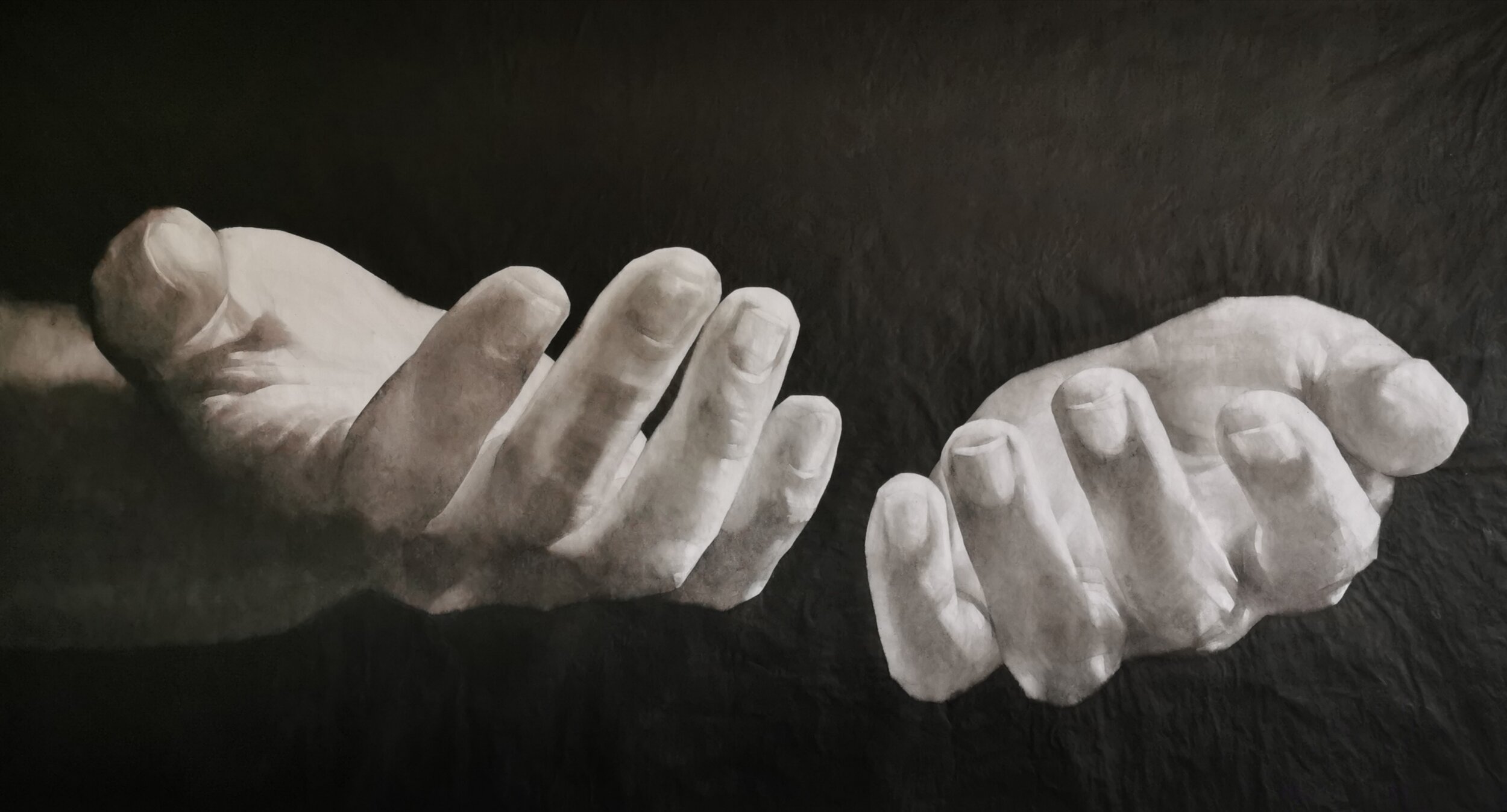
Born in 1951 Qu Lei Lei stands as one of the founding members of the ‘Stars art democracy movement’ , the first ever contemporary art movement to appear in post Maoist China in the later 1970s. Campaigning for freedom of expression in the arts they revolutionized thinking in an environment largely used to propaganda art with its primary purpose of thought control. It seemed at the time that China was waking up from a very long sleep. Similar to the Arab spring it was as if a lid had been briefly lifted and at almost at breakneck speed numerous other literature and philosophy movements were budding up all over the place at times intertwining themselves with each other. This constituted an awaking for Qu Lei Lei however the beginning of this awakening lay decades earlier in the tumultuously challenging events that shaped his life and subsequently his thought processes. Belonging to a family of intellectuals like many of his age group he found himself on the harsher end of the cultural revolution. This lead to the notion that people were not just indispensable units for the greater good , they were not anonymous screws in the larger machine It was the dehumanisation of his fellow human beings the anonymity of the masses perhaps it was this that lead to the humanist and individualist themes that stream through the greater quantity of his art work.
Layered with calligraphy texts which set out to show us lessons from history in the Sun in my Dream collages we can see memories from his time in his Manchurian re-education camp with figures pulling the plough for lack of an Ox. In his hand series we can see all manner of human nature displayed very simply and poignantly through just an ink representation of a pair of large-scale hands. With the Misinformation Virus we can see his almost mournful take on the tragedy of fake news and the disasters which lie in its wake. It is almost always the human cost which he wants us to see. In the same vein we witness this with the skittles project Silence and Screaming as we see the relentless cruelty of regimes who repeatedly knock down the masses in pursuit of their own ends. It is always the poorest and most vulnerable who pay the price. In the stones we again see the essence of this in the message emerging not always legibly from the letters within the naturally occurring geological white lines. These very ancient lines formed over centuries again put together form a message ‘The whole of history appears in silence’. They invite you to reflect and learn through history.
Perhaps most striking overall is behind all his work you find an artist with a great underlying sense of compassion for humanity. His lack of arrogance and ability to ask questions from all areas of society which perhaps stand as his defining feature as an artist. From asking a homeless man what he can learn from his life and turning it in to an artwork to asking war veterans to write lines for his imagery; he always comes across as a man in search of answers for humanity and its direction. Born and raised under the Maoist regime he had little or no control over his identity. As if a small cog in the communist machine, like many of his compatriots he was to an extent deprived of even a desire to find out who exactly who he wanted to be. Almost ironically you could argue that it was from this that he developed this all-encompassing desire to observe and understand humanity not only with all its incongruities but its dignity as well.